This Submerged Goan Village Reappears for Just 2 Months Every Year
A theatrical miracle plays out in South Goa every May. As summer envelopes the state in a blazing embrace, the waters around a piece of land in the Sanguem taluka dry out, and from their depths emerges our protagonist — the Curdi village of Goa.
Its performance is short-lived, stretching across April and May, following which, it gracefully bows out, submitting itself to the monsoon, and its underwater position for the next ten months.
But for the two months when it makes its cameo, Curdi becomes an integral part of Goa’s social fabric. Its once-in-a-blue-moon sighting lends to its allure, drawing scores of tourists who want to feast their eyes on this fleeting wonder.
Eish Kakodkar has frequented the village many times, as part of the expeditions he leads for Soul Travelling, an initiative specialising in off-beat tourism across Goa.
He recalls his Curdi rendezvous as bittersweet.
“In summer, we can finally see Curdi. It’s exciting because we feel like we are uncovering something that wasn’t known before. But, when you think of it, the larger picture is tragic; you see remains of houses that once were made up of terracotta tiles — so beautiful, but now bits and pieces. It makes you wonder how the village was in the past.”
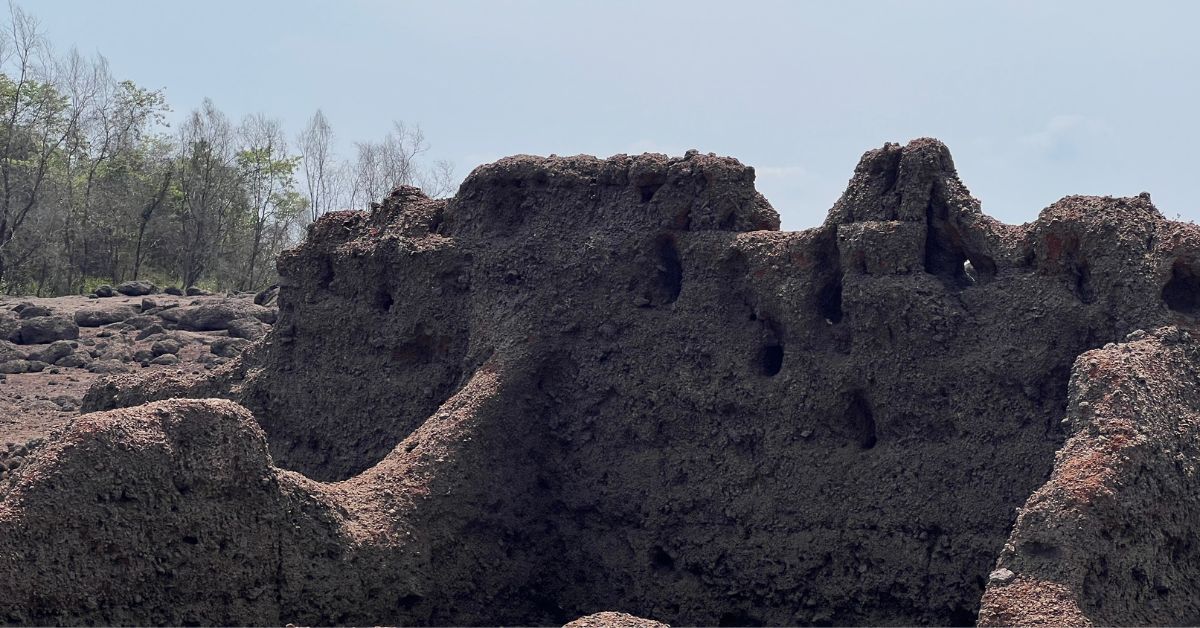 Curdi in Goa is a submerged village that emerges out of water for two months of the year, Picture credits: Eish Kakodkar
Curdi in Goa is a submerged village that emerges out of water for two months of the year, Picture credits: Eish Kakodkar
As he meanders through the village, he finds himself concocting stories of its heyday. “You start creating scenarios in your head about the lives these people must have led.”
And now, you can do the same.
Unpeeling the layers of the village of Curdi in Goa
The Curdi excursion conducted by Soul Travelling starts at 7 am in Panjim and 7.45 am in Margao. Sink your teeth into a traditional Goan breakfast before you head to the village in the transport arranged as part of the excursion.
 May sees the Someshwar zatra which is a religious celebration accompanied with song, music, and food, Picture credits: Eish Kakodkar
May sees the Someshwar zatra which is a religious celebration accompanied with song, music, and food, Picture credits: Eish Kakodkar
You’ll be spending the rest of the day knocking on history’s doors to understand the secrets of the lost village, touted to be the ‘Atlantis of Goa’, referencing the civilisation that was swallowed by the sea.
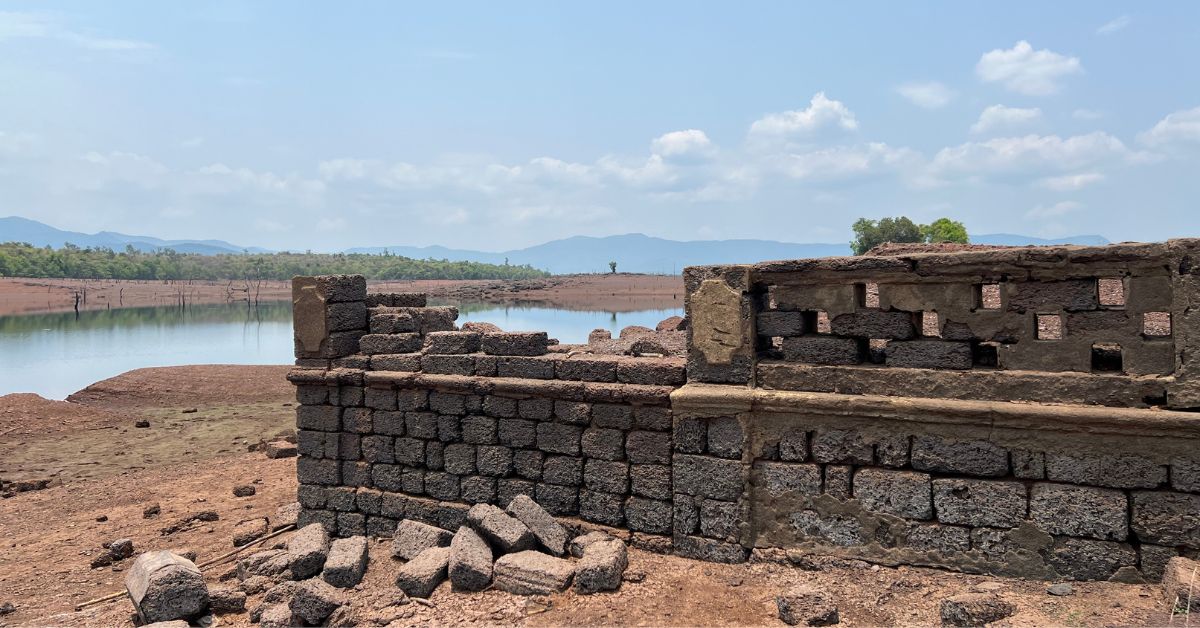 Remnants of the village can still be seen to date when the waters receed in summer, Picture credits: Eish Kakodkar
Remnants of the village can still be seen to date when the waters receed in summer, Picture credits: Eish Kakodkar
Unlike Atlantis, however, you don’t need to rely on myths to know the details. At Curdi, you’ll most likely meet ex-locals, who were internally displaced when the waters of the Salaulim Dam reservoir flooded their beloved village in 1986.
Eish and the team rely on this local wisdom to draw conclusions about the village. “These are people who lived there; they talk about their childhoods, how they played in the area, about the cashew and mango plantations that existed. We have made detailed notes of it and share these with guests during the journey,” Eish explains, adding that there are certain iconic remnants that still persist. For example, a moon dial (a device that uses the moon’s light to tell time) and the home of Padmabhusan awardee Mogubai Kurdikar and her daughter Kishoreetai Amonkar.
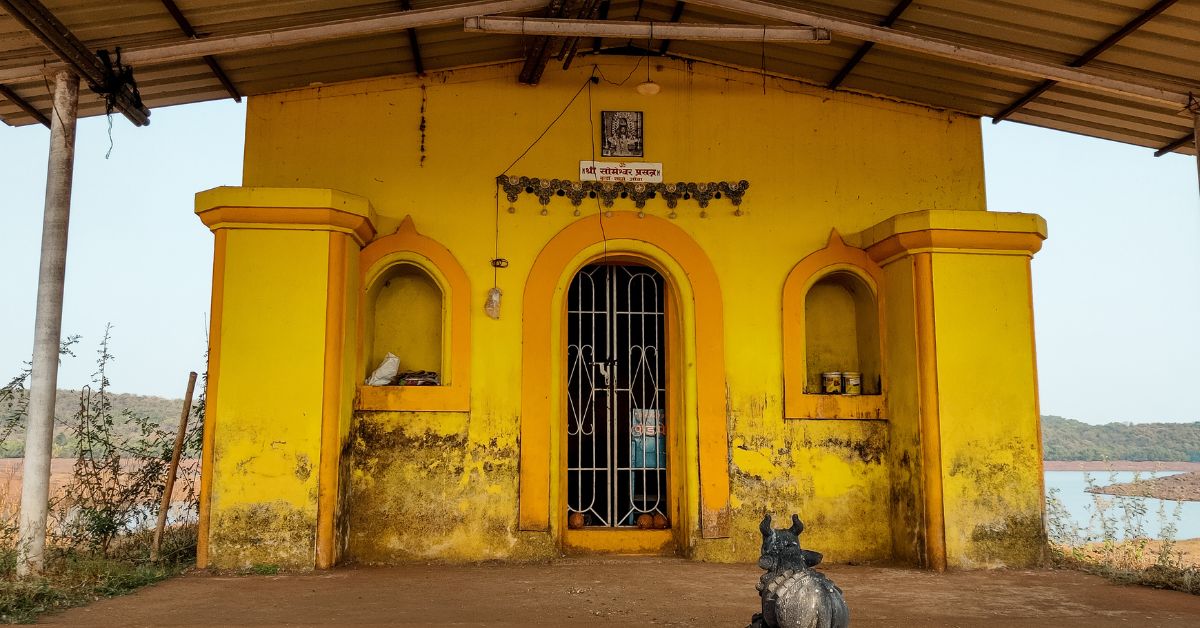 The Shree Someshwar Temple in Curdi sees scores of devotees flocking here during the summer, Picture credits: Eish Kakodkar
The Shree Someshwar Temple in Curdi sees scores of devotees flocking here during the summer, Picture credits: Eish Kakodkar
Then there are the two pièces de résistance — the Shree Someshwar Temple dedicated to Lord Shiva, and the Sacred Heart of Jesus chapel. Devotees flock to these in May.
Eish explains, “In summer, we have the Someshwar zatra; it sees a huge gathering. Tents are set up, meals are cooked and served, and traditional songs are sung. There’s also the mass that happens at the chapel.”
After a visit to these spots, the excursion segues into a walk through the neighbouring plantations.
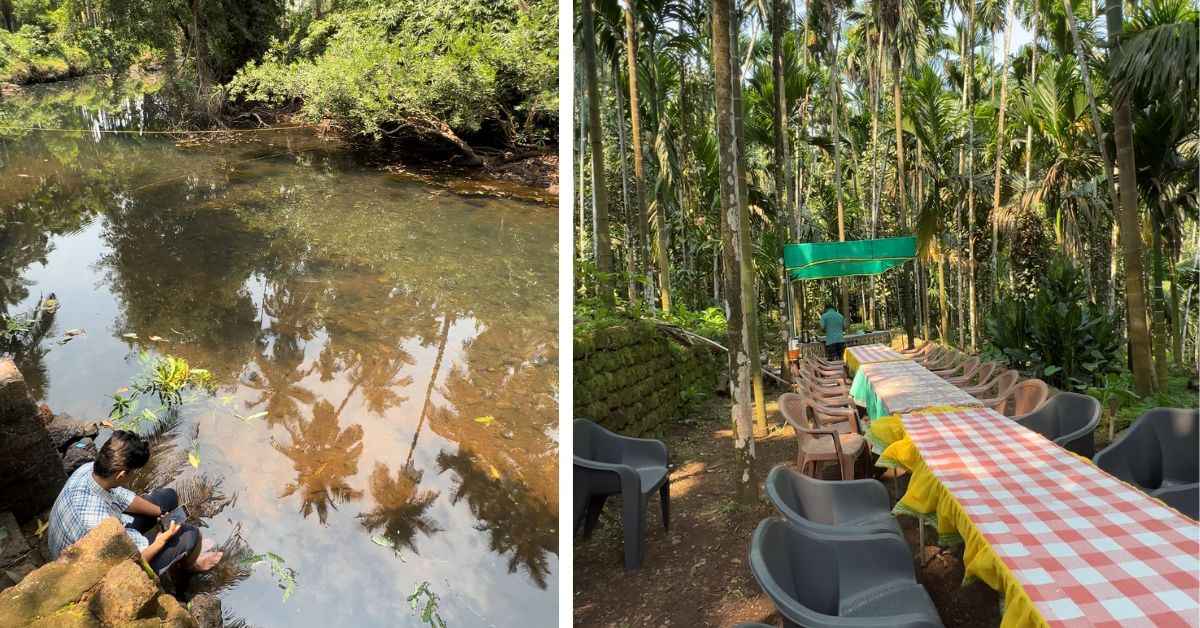 The Soul Travelling excursion to Curdi includes a dip in the river and a traditional Goan lunch, Picture credits: Eish Kakodkar
The Soul Travelling excursion to Curdi includes a dip in the river and a traditional Goan lunch, Picture credits: Eish Kakodkar
“Then, we rest, take a dip in the natural stream, serve Urak (traditional beverage made with fermented cashew apple juice) cocktails and then head to one of the locals’ homes for a lunch featuring Goan summer specials,” Eish adds.
What happened to Curdi and why?
Notice the fissures in the ground that mark out the Curdi territory. These cracks are mirrored in the locals’ stories, in the pain of parting with their homes.
Let’s revisit what happened and the events that led to Curdi becoming the enigma it is.
Before 1986, Curdi was cocooned by two hills in the Western Ghats. The Salaulim River ran through it. As a BBC article reports, Curdi was home to fertile soil that supported coconut, cashew, mango and jackfruit trees. It was home to around 3000 villagers.
 During the exclusion through Curdi village, you’ll meet numerous ex-locals who also frequent it to pay their respects, Picture credits: Eish Kakodkar
During the exclusion through Curdi village, you’ll meet numerous ex-locals who also frequent it to pay their respects, Picture credits: Eish Kakodkar
In 1961, Goa became a part of India after it finally achieved independence and overthrew Portuguese rule. According to reports, liberated Goa’s first chief minister, Dayanand Bandodkar, initiated the Salaulim Dam project, the state’s first dam.
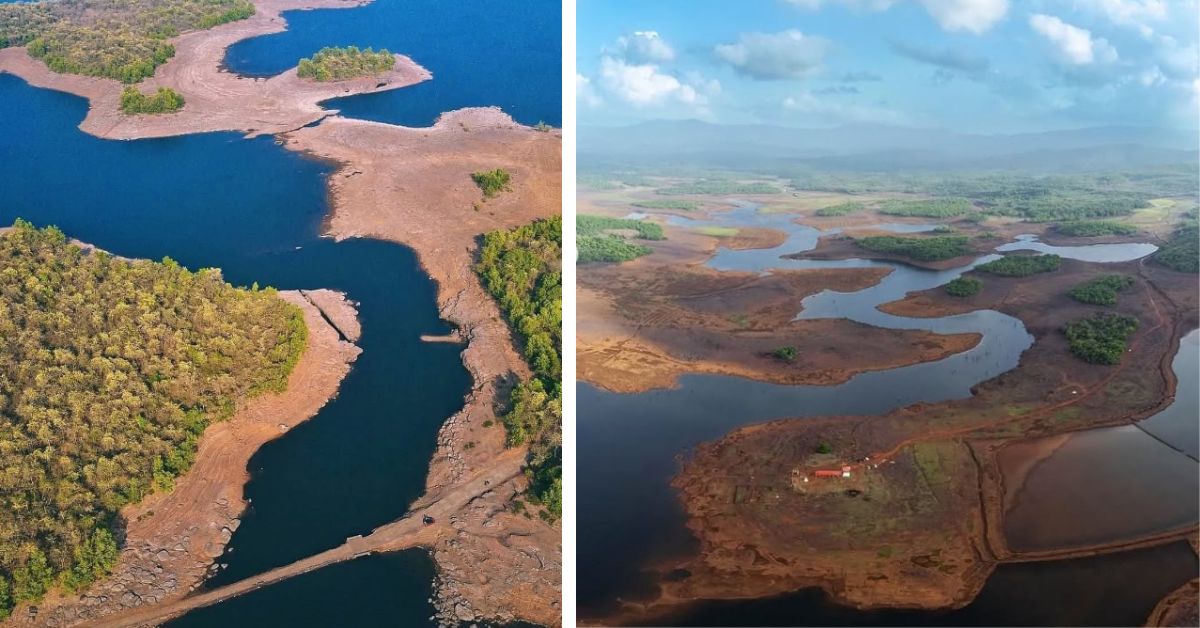 Curdi village in Goa was flooded by the waters of the Silaulim Dam reservoir in 1986, Picture credits: Sheldon Rodrigues
Curdi village in Goa was flooded by the waters of the Silaulim Dam reservoir in 1986, Picture credits: Sheldon Rodrigues
He promised the residents of Curdi that this project, termed the ‘Salaulim Irrigation Project’, would benefit them immensely by providing water for drinking, irrigation and industrial purposes to south Goa.
But the village of Curdi was caught in the crosshairs. “He said it [the project] will drown our village, but our sacrifice will be for the greater good,” a Gajanan Kurdikar, whose family was one among the 600 families displaced, told BBC. These families were given land and compensation. Soon, with the inauguration of the dam, waters gushed into Curdi and the village’s identity was lost in the mists of time, until one summer it re-appeared.
Today, there’s a chaotic silence that engulfs Curdi, allowing you to almost hear the echoes of laughter, hustle and hope that it was once host to.
You can book your Curdi experience here.
Edited by Saumya Singh
Sources
News